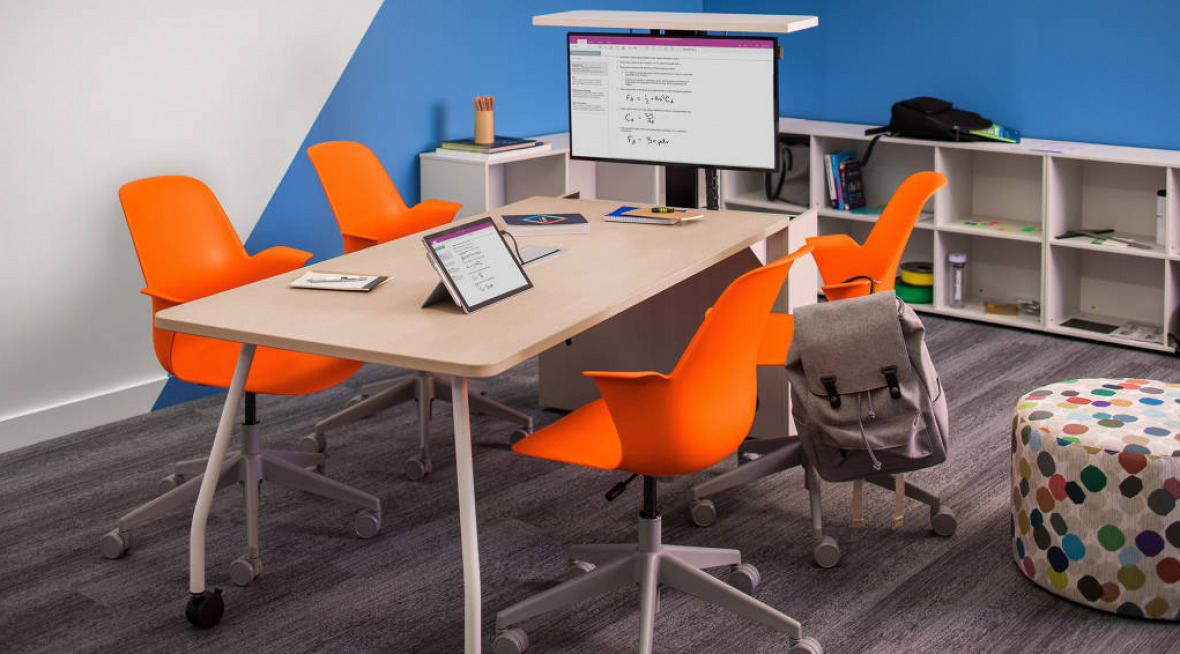We use cookies to maximize your online experience with us. By closing this window, you consent to our cookie policy. You can change your cookie settings in your browser any time. For more information, please see our Privacy Policy located on the footer of this site.
Active Learning Spaces Impact Student Engagement

The way furniture is designed and configured in today’s classrooms can significantly affect how students learn. By controlling how desks and tables are arranged in the space, instructors can encourage several active learning behaviors – allowing students to work together and solve problems. Furniture that is easy to move integrated with collaborative technology further allows instructors to shift styles to accommodate their lesson plan.
Classroom design can directly influence the type of learning activities that occur. For example, a room with rows of desks facing a lecturing teacher in front of the room conveys the traditional pedagogical approach, where students receive and absorb their information from one source. In contrast, a room of square tables with a chair on each side conveys the importance of teamwork and interaction, promoting an active learning environment.
Diving a little deeper, there are three main types of furniture arrangements in classrooms today:
- Lecture: Arranging desks or tables so that students are facing the teacher at the front of the room works well for direct instruction, because it focuses students’ attention solely on the instructor and their lesson.
- Large Group: Arranging desks or tables in a large circle or “U” shape, allowing students to see each other, making group discussion easier.
- Small Group: Arranging desks or tables in small groups, with three or four students facing each other, which encourages interaction and collaboration.
Today’s learners perform their best with both analog and digital sources of information. The ability to move from listening to the teacher, to group and independent work using mobile devices can maximize student engagement. Lesson plans contain different activities that can flow from one to the next, therefore it’s important to create spaces capable of quick reconfiguration using moveable tables and chairs with the technology to match.
A recent study by the University of Salford in England supports this idea, finding that “classroom design can have a 25% impact, either positive or negative, on a student’s progress over the course of an academic year—and space flexibility was one of six key environmental factors that showed the most effect.” This shows the significance of space design in educational environments. Alone, it can impact a quarter of a student’s academic progress, among several other factors.
Flexibility is key when designing learning spaces, because each classroom layout has its teaching benefits. Engagement will vary from student to student, but creating a space capable of multiple active learning environments gives teachers the best opportunity to reach all of their students and enhance their development.
